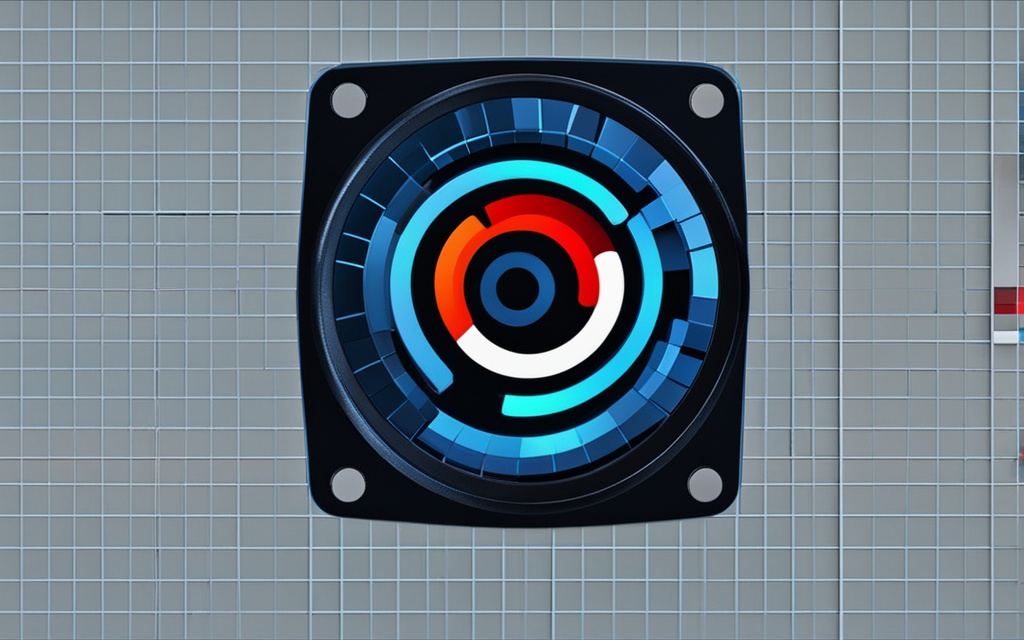Table of Contents
The normal temperature range for CPUs is crucial for good CPU performance. This is true for gamers and regular users alike. Most CPUs work best between 30°C and 40°C (86°F to 104°F) in normal use. They can reach 75°C to 80°C (167°F to 176°F) during heavy tasks like gaming1.
It’s important to keep within these limits to avoid damage, as temperatures over 80°C (176°F) are too high1. Different models have different heat tolerances. This affects how well they manage in the heat2.
Knowing about this CPU temperature range helps users choose the right CPU cooling system. This way, their devices stay stable, even under a lot of pressure. For more information, check out an interesting discussion here3.
Key Takeaways
- Normal CPU temperatures range between 30°C and 80°C depending on the workload.
- High CPU temperatures above 80°C can lead to performance issues.
- Cooling solutions are crucial for maintaining optimal CPU temperatures.
- Environmental factors, such as room temperature, affect CPU performance.
- Regular maintenance can prevent overheating.
- Choosing the right CPU model influences thermal endurance.
Understanding CPU Temperature
The CPU temperature is key for computer performance. It shows how hot the CPU gets when it works. Learning about CPU temperature definition lets users make smart choices for their computers. The influencing factors are many and important. They impact everything from how well the PC works to how long the CPU lasts.
What is CPU Temperature?
CPUs usually work between 30°C to 70°C. They depend on what you’re doing and how well the PC is cooled. When doing intense tasks like gaming, CPU temperatures can go over 70°C3. If the PC is doing nothing, temperatures are around 30°C to 40°C. Overclocking can make CPUs reach over 90°C. This is risky without good cooling3.
It’s crucial to know that high temperatures can cause thermal throttling. This affects the PC’s speed and reliability1.
Factors Affecting CPU Temperature
Several influencing factors change CPU temperature. They include the type of processor, its speed, and its voltage. The CPU load is very important, as more use makes it hotter. Room temperature also affects cooling. Good airflow and thermal paste help keep temperatures down1.
Regularly cleaning the PC and upgrading its cooling can help manage heat. Knowing how CPU temperature works lets users improve their PCs. This ensures a smooth experience.
For more tips on controlling CPU temperatures, check out this informative resource31.
What CPU Temperature is Normal
Knowing what a normal CPU temperature is, is key for good performance. Most CPUs work well within a certain normal operating temperature range. This keeps them from overheating while handling tasks. These temperatures are usually between 40°C to 80°C for most activities. When doing intense tasks, temperatures can go up. It’s important to keep an eye on this to protect your computer.
Standard Operating Ranges
The standard CPU temperature when gaming is between 60°C and 85°C. At a moderate load, you can expect between 50°C to 70°C. If a CPU is not doing much, it stays cooler, from 30°C to 50°C. These numbers show how well a CPU is working. Temperatures over 80°C could mean your system is overheating45.
Impact of Load on Temperature
High-demand tasks like gaming increase CPU temperatures. They can even go above 80°C, putting your system at risk. High temperatures can slow down performance or damage the hardware. Sometimes, during intense use, CPUs hit over 90°C, which is dangerous65. Watching these temperatures is crucial for preventing issues and keeping your system healthy.
Normal vs Optimal CPU Temperatures
It’s important to know the difference between normal and optimal CPU temperatures. This knowledge helps keep your processor running well for longer. Normal temperatures range widely, but optimal ones are set for the best performance and life span.
Defining Normal Temperatures
Normal CPU temperatures change depending on how much the computer is doing. When not doing much, temperatures stay between 35 and 50°C (95-122F)7. But with heavy use, like gaming, they can jump to 60-85°C (140-185F)7. Going above 85°C (185F) is risky and could harm your processor7.
On average, CPUs should run at 40°C to 80°C (104°F and 176°F) for normal tasks8. With tougher jobs, temperatures can rise to 60°C – 90°C (140°F – 194°F)8.
Defining Optimal Temperatures
For best results, CPUs should stay below 70°C. Modern processors, like the AMD Ryzen, have built-in safety features. They shut down before hitting danger levels to avoid damage7. This helps your chip last longer, unlike older models that could reach 100°C and risk problems if they get too hot7.
Keeping your CPU at the right temperature means better performance and a longer life for your PC. Regular cleaning, upgrading your cooling, and changing the thermal paste help reach these goals8.
| Temperature Range | Condition | Recommended Action |
|---|---|---|
| 35 – 50°C (95 – 122°F) | Idle State | Monitor |
| 60 – 85°C (140 – 185°F) | High Load | Ensure Cooling |
| Above 85°C (185°F) | Warning | Immediate Action Required |
| 40 – 80°C (104 – 176°F) | Normal Load | Maintain |
| 60 – 90°C (140 – 194°F) | Heavy Load | Evaluate Cooling |
How to Check and Monitor CPU Temperature
Keeping an eye on your CPU’s temperature is key to a smoothly running system. Software tools can help you watch your CPU’s heat in real time. This makes sure it stays within safe levels.
Using Software Tools
There are several tools out there for checking your CPU’s temperature. Core Temp, HWMonitor, and AIDA64 offer up-to-date and maximum temperature readings. You can log this data to spot trends over time.
Stress tests like Prime95 push your CPU to its limit. This shows how hot it can get before it risks overheating9. Keeping tabs on these metrics can boost performance. Plus, it helps to avoid damage to your hardware.
Setting Alerts for Safe Operating Ranges
Creating alerts in these tools can be a big help for your CPU’s health. These alerts let you know if the temperature goes above safe points, usually around 80°C10. When you’re not doing much, your CPU should be cooler than 60°C. Under heavy use, try to keep it below 80°C11.
This approach lets you act quickly if things get too hot. You might need better cooling or to lighten the load on your system. It’s all about keeping things running well for longer.
What to Do If CPU Temperature Is Too High
Keeping your CPU cool is key for your system’s performance and lifespan. By adding efficient cooling solutions and routine maintenance, you can lessen overheating risks.
Identifying Cooling Solutions
If your CPU’s temperature goes over 80°C (176°F), you need to act fast to protect your hardware. Exploring options for high CPU temperature solutions might include:
- Improving air flow in the computer case for better ventilation.
- Switching to an affordable liquid cooling system.
- Opting for bigger heat sinks to help with heat removal.
Also, picking high-quality cooling products from trusted brands like Noctua and be quiet! makes a big difference12. Normally, a PC should run between 40-60 degrees Celsius. So, keeping it cool is essential12.
Common Maintenance Practices
For the best CPU performance, regular maintenance practices are crucial. Here are some effective ways:
- Cleaning dust off fans and heat sinks regularly for good airflow.
- Applying thermal paste again to ensure better connectivity.
- Keeping cables tidy to help air move freely.
Buying removable dust filters, which usually cost around $50 for two, keeps your PC clean13. An Electric Compressed Air Duster for about £30 is also handy for this13. Following these steps avoids overheating. When CPUs get too hot, they slow down to cool down12.
Conclusion
Knowing how to handle CPU temperatures is key to keeping a computer in top shape. It’s best to keep temperatures between 22°C (72°F) and ideally under 80°C. This helps the system work well for longer14. Regular checks and the right software tools can keep the heat safe. This means even heavy games won’t make it too hot15.
Being aware of what affects CPU cooling is also important. Things like room temperature and the cooling systems used matter a lot. Making sure your computer has good air flow and is clean helps keep it cool, especially under heavy use15. Keeping things running smoothly can prevent damage and make your computer perform better.
In short, cool and steady CPU temperatures let your computer work its best. Regular maintenance and smart changes help a lot. Doing these things means a better computing experience and protection for your computer’s vital parts for a long time14.
FAQ
What is the normal temperature range for CPUs?
Most CPUs work well between 40°C and 80°C when doing normal tasks. When things get tougher, temperatures can go up to 60°C to 90°C. Going beyond these limits could harm the CPU or slow it down.
How can I define CPU temperature?
CPU temperature shows how hot the CPU gets when it’s working. It changes based on the work it’s doing, how good the cooling is, and the room’s temperature.
What are the various factors affecting CPU temperature?
Many things can make CPU temperatures go up. These include the type of processor, its speed, the voltage, and how hard it’s working. The effectiveness of cooling and the surrounding temperature also play a big part.
What are the standard operating ranges for CPU temperatures?
CPUs generally stay within 40°C to 80°C for most tasks. For heavier tasks, they can heat up to between 60°C and 90°C.
How does CPU load impact temperature?
When the CPU works harder, it gets hotter. During intense activities, temperatures can hit 97°C or more. That’s very close to the danger zone.
How can I distinguish between normal and optimal CPU temperatures?
Keep temperatures below 80°C for heavy tasks to be safe. Yet, aiming for under 70°C is best for the CPU’s health and to avoid slowing it down.
What tools can I use to monitor CPU temperature?
You can use software like HWMonitor, Core Temp, SpeedFan, and CPU-Z. They show you the current and highest temperatures of your CPU.
How can I set alerts for safe operating ranges?
Tools like HWiNFO and AIDA64 not only track temperatures but also alert you when they get too high. This helps you keep things safe.
What should I do if my CPU temperature is too high?
If your CPU gets too hot, it’s crucial to cool it down. Adding better air flow or bigger heat sinks can help. Regular cleaning also makes a big difference.
What are the common maintenance practices for CPU cooling?
Clean the dust off fans and heat sinks often. Reapply thermal paste, manage cables well for airflow, and keep your PC in a cool room. These steps keep your CPU cool.
Source Links
- https://www.shiksha.com/online-courses/articles/all-about-cpu-temperature-range/ – CPU Temperature Range That Must Be Maintained – Shiksha Online
- https://www.buildcomputers.net/cpu-temperature.html – CPU Temperature – What are the Normal and Maximum CPU Temps?
- https://www.lenovo.com/us/en/glossary/what-is-cpu-temperature/ – Cpu Temperature: What is CPU Temperature?
- https://www.lolvvv.com/blog/normal-cpu-temp-while-gaming – What is a Normal CPU Temp While Gaming?
- https://gadgetmates.com/normal-cpu-gpu-temperatures-for-your-pc – Normal CPU & GPU Temperatures For Your PC – GadgetMates
- https://apexgamingpcs.com/blogs/apex-support/normal-cpu-temp-while-gaming – Normal CPU Temperature While Gaming
- https://www.techadvisor.com/article/726264/whats-the-best-cpu-temperature.html – What’s the best temperature for your CPU?
- https://www.linkedin.com/advice/3/what-normal-optimal-ranges-cpu-temperature-different – What are the normal and optimal ranges of CPU temperature for different types of processors?
- https://www.tomshardware.com/how-to/how-to-check-cpu-temp-temperature – How to Check Your CPU Temperature
- https://www.pandasecurity.com/en/mediacenter/how-to-check-cpu-temp/ – How to Check Your CPU Temperature – Panda Security
- https://www.avast.com/c-how-to-check-cpu-temperature – How to Check and Monitor Your CPU Temperature
- https://community.spiceworks.com/t/what-is-a-normal-temperature-for-a-cpu-and-how-do-i-keep-it-low/948818 – What is a normal temperature for a CPU and how do I keep it low?
- https://www.linkedin.com/advice/1/how-can-you-lower-your-cpu-temperature-too-high – How can you lower your CPU temperature if it is too high or overheating?
- https://forums.tomshardware.com/threads/are-my-cpu-temperatures-normal.3437233/ – [SOLVED] – are my CPU temperatures normal?
- https://directmacro.com/blog/post/what-is-optimal-cpu-and-gpu-temp – What Is Optimal GPU Temp and CPU Temperature Range












